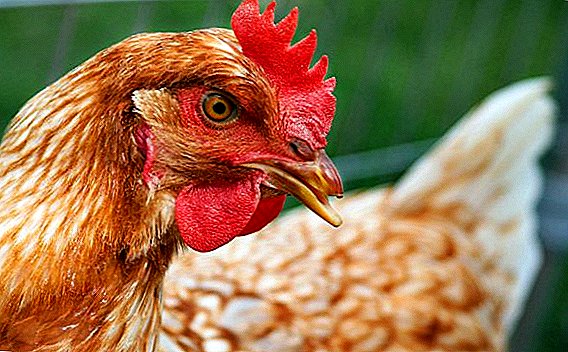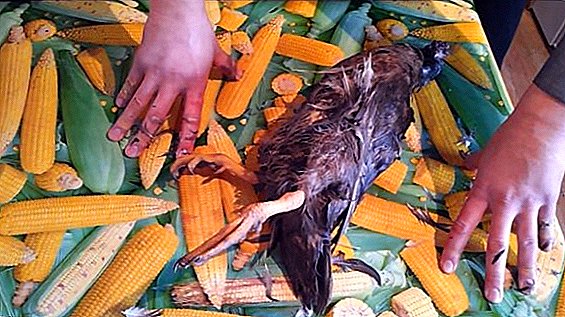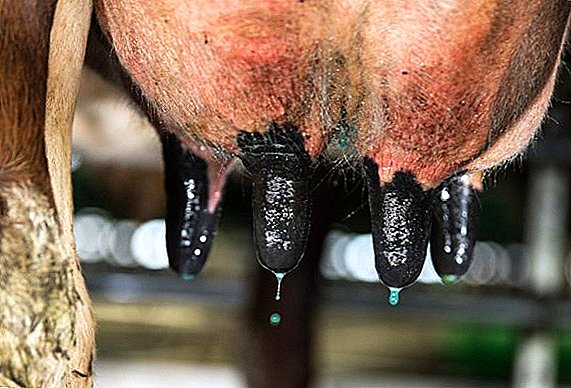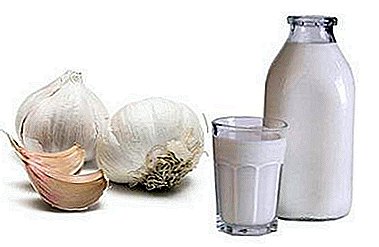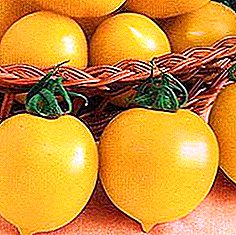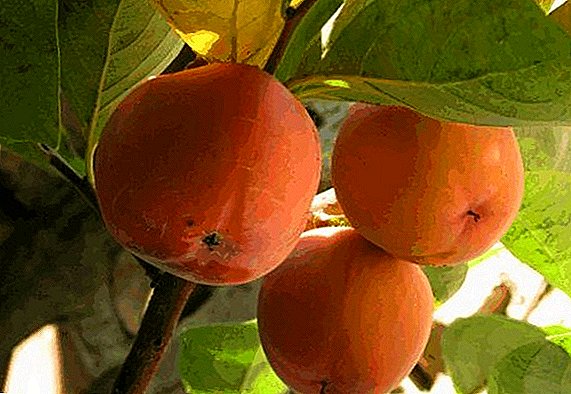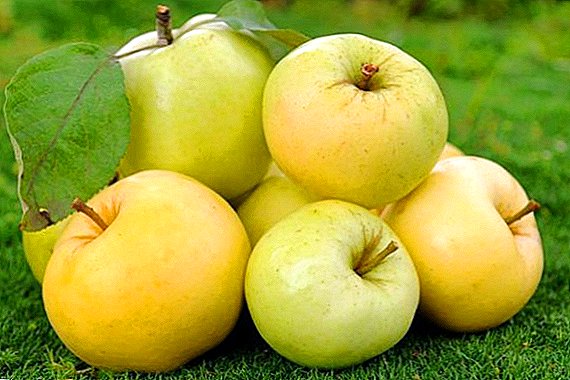 Greenhouse is the dream of almost every gardener, with its help you can easily and quickly grow seedlings, get an early harvest, or generally enjoy fresh vegetables and herbs all year round. All these benefits are possible if properly care for the room. How and what procedures should be carried out in the greenhouse in the spring, we consider in more detail.
Greenhouse is the dream of almost every gardener, with its help you can easily and quickly grow seedlings, get an early harvest, or generally enjoy fresh vegetables and herbs all year round. All these benefits are possible if properly care for the room. How and what procedures should be carried out in the greenhouse in the spring, we consider in more detail.
What is it for?
Preparing a greenhouse for a new season in spring is a very important event. In order to grow healthy seedlings and crops, it is imperative that you clear the plant garbage, repair and sanitize the premises.
In the greenhouse you can grow a lot of vegetables: tomatoes, cucumbers, eggplants, sweet peppers, and even strawberries.
This will provide further easy and carefree care for your plants without additional labor and financial costs, such as for the fight against diseases and pests. And even if in the fall you properly put your greenhouse in order, spring procedures should not be neglected. 
Terms of care for the greenhouse after the winter
In winter, in any case, a number of adverse conditions are created, be it excessive precipitation, strong wind or constant temperature drops. All this can harm the design.
Did you know? The largest greenhouse in the world is located in England, in a vast area grows more than 1000 different plants, from tropical to Mediterranean.
Integrity check
It is necessary to carefully examine the structure, the wooden elements could become unusable due to dampness, and the metal elements could rust. therefore you should go through every detail and explore every bolt. Those elements that have fallen into disrepair should be replaced, and what else can be saved - to repair.
If the winter was too snowy, pay attention to the frame, if it is tilted, you need to patiently align all its elements and think about how to strengthen it, so as not to do extra work next season.
Despite the high rates of stability, even such material as polycarbonate can bend or darken from precipitation and temperature changes. In this case, all defects must be eliminated, and if this is not possible, replace the damaged parts. 
Cleaning
There is a painstaking and probably boring part of the preparation for the new season, which still needs to be treated very carefully. Important! It is necessary to completely rid the soil of the roots and weeds.
If you are too lazy and left to winter the remnants of last year's harvest, all this should be removed, not leaving a single chance for the resumption of life. For this plants are dug up and burned. Then they remove 10-15 cm of soil and carry it far beyond the greenhouse.
This land can be transferred, for example, to a flower garden. Last year's plants are not suitable for composting. They should be disposed of far away from the greenhouse - this is the key to a healthy harvest, as many diseases and pests are resistant to frost. 
In addition to vegetable garbage, it is necessary to remove other contaminants, let's find out what else to wash the polycarbonate greenhouse. Windows and film - a solution of water and laundry soap, 9% vinegar mixed with water is suitable for cleaning the metal parts of the frame. Polycarbonate is best washed, dissolving a small amount of potassium permanganate in water, the liquid should be slightly pinkish.
Disinfection room
Disinfection of polycarbonate greenhouses - perhaps the most important procedure, which is carried out in the spring. If you want to protect your future harvest from harmful insects and diseases, be sure to carefully disinfect the room.
Important! Fungal infections are considered to be the most winter-hardy ones; in order to kill their spores, it is necessary to perform all disinfection procedures step by step.
1. Processing with hydrated lime
This processing method is considered highly efficient. Bleaching powder, if properly used, can destroy pests. In order to prepare the solution, it is necessary to dissolve 400-500 g of hydrated lime in 10-12 liters of water, then let it brew for at least 24 hours. The substance is very strong, so you should work with it very carefully.
With the help of the fluid should spray room, do not disregard any corner. The resulting precipitate can be used for processing wooden elements. It is also recommended to pour the solution into all the cracks and hard-to-reach places that are so favorable for harmful organisms. The whole greenhouse is treated, and the soil as well.
Learn about the features of the use of a greenhouse with an opening roof, as well as how to do automatic ventilation.
2. fumigation sulfur checkers
The sulfur checker is ideal for cleaning from pests of polycarbonate greenhouses. With it, you can carry out the procedure without much difficulty. All that is required of you is to put on gloves and a respirator, close all windows, place a checker there, set fire and close the door.
The greenhouse will be filled with smoke with a characteristic smell of sulfur, in this form it should stand for 4-6 days. Then you need to open all wide open and ventilate the greenhouse. Experts do not recommend using this method in cases where metal parts are dominated by metal parts, as this may cause them to corrode.
3. Spraying drugs
If in the previous season there were no significant problems, the plants did not hurt and they were not bothered by pests, a more gentle method of disinfection would be suitable - treatment with biological preparations. Such substances, though not effective against many pests, but they certainly do not harm either the future plants or the soil. By the way, this treatment is even very useful for soil, as it will fill it with biologically active substances.
If you decide to acquire a greenhouse, then you can buy it in a disassembled form and assemble it yourself, for example, the Signor Tomato. Also, the greenhouse can be made independently of polycarbonate, wood or film.
4. Tillage
Approaching the finish line, you should prepare the ground in the greenhouse before the upcoming landing. If for some reason it was not possible to remove the top layer of soil, the first thing to do is to treat it with a solution of copper sulphate. But experts still recommend partially renewing the land. 
As a new soil, it is best to use a previously prepared mixture of loamy soil with the addition of sand, peat and humus. The ground in the greenhouse should be loose and light. It is good to check how things are with the acidity of the soil. And depending on the crop that you plan to plant, bring it back to normal, suitable for a particular plant.
After this, it is necessary to form the beds, once again loosen the soil, and finally, make complex mineral fertilizers, this will help to achieve maximum yield. The easiest way to enrich the soil in the greenhouse - is planting sideratov.
Did you know? Siderata - green assistants that are used before planting the main crops in order to improve the soil. In the role of siderats can act more than 400 species, and most often use legumes, cereals and cruciferous plants.Planted them in the last week of March. After abundant greenery has appeared, it is cut and buried in the soil, approximately 14 days before planting. During this time, siderats will have time to saturate the earth with nitrogen and humus and significantly improve the quality of the soil. And they will protect the new crop from weeds.
5. Ground heating
In order to start planting, you need to wait until the temperature of the earth in the greenhouse is not lower than 13-16 ° С. To accelerate the heating of the soil, you can use several methods. You can cover the ground with any dark material, black or dark color attracts the sun's rays, due to which the process is greatly accelerated.
Often, for these purposes, watered with warm water is used, for 2-3 procedures you can achieve the desired temperature, while still providing moisture. Cold air from the greenhouse, in the presence of electricity, can be driven out with the help of a fan, for this it is enough to install it on the floor and leave it on for several hours.
The processing of polycarbonate greenhouses in spring is a rather laborious process. But it should be remembered that all your efforts will be rewarded with a healthy and abundant harvest, and in the shortest possible time. Therefore, having worked, once you will reap the fruits of your efforts until the autumn, it was then that another mandatory treatment of the greenhouse is carried out.


